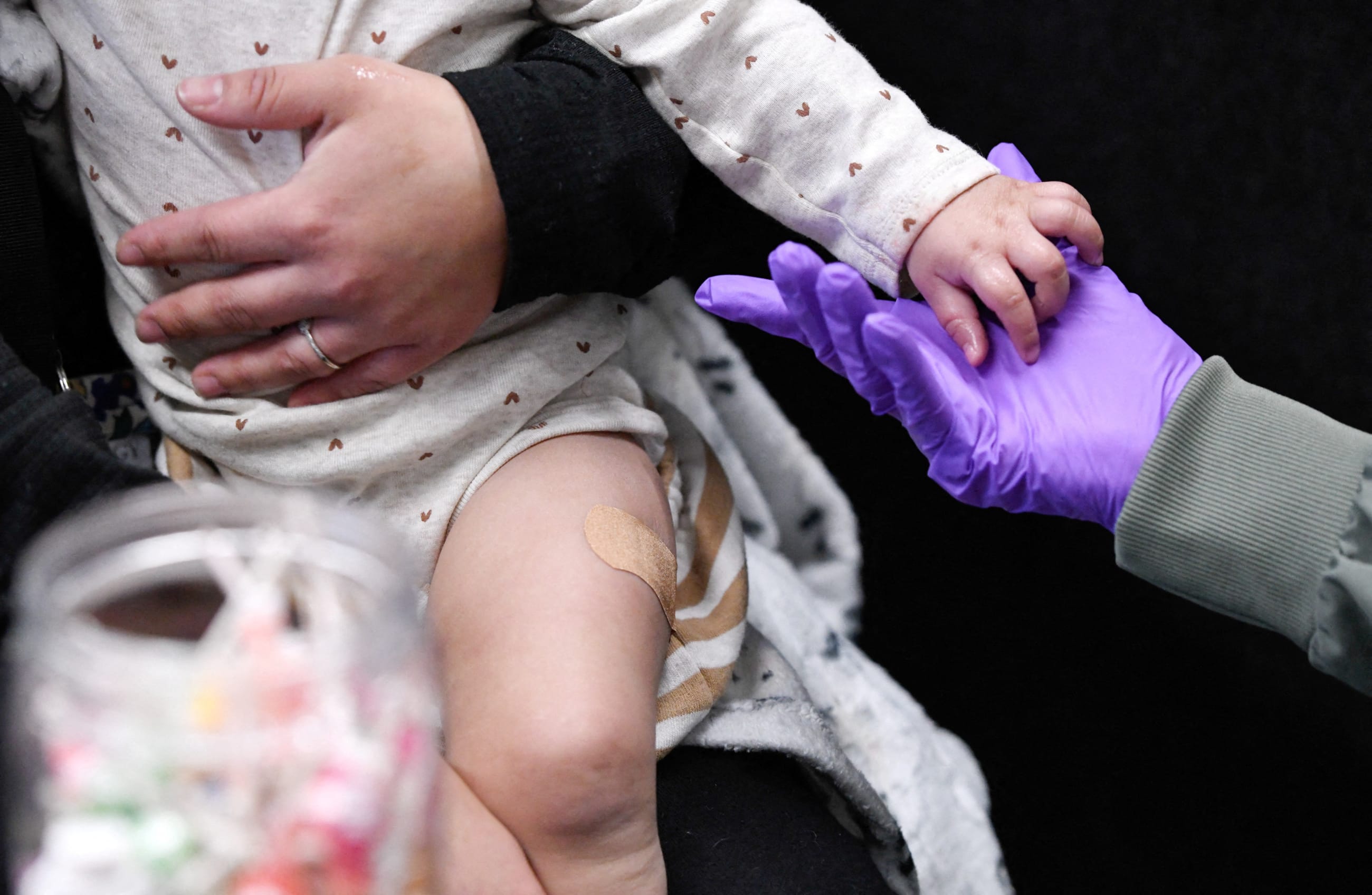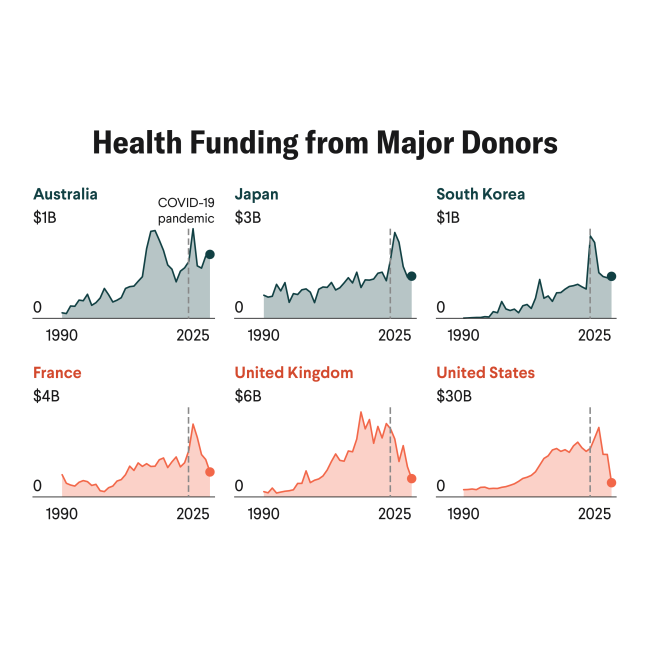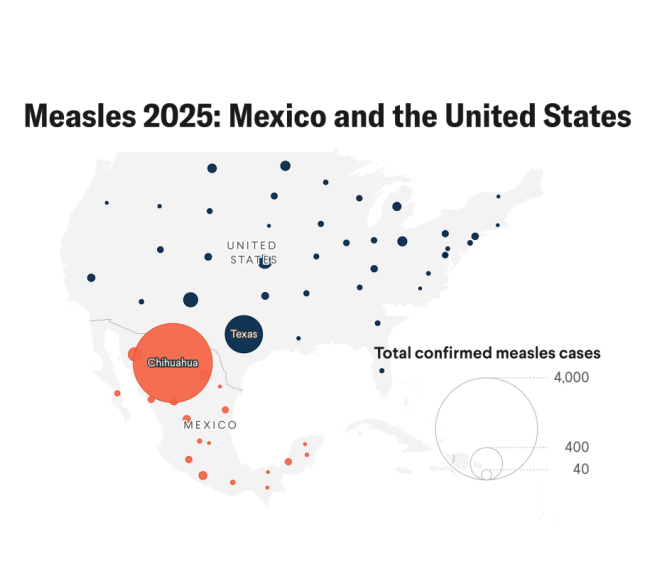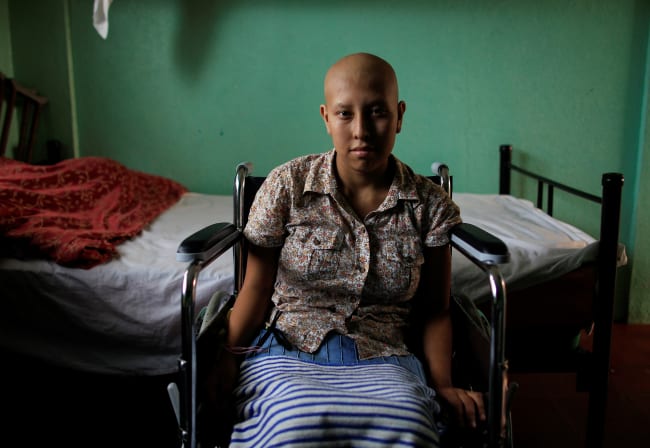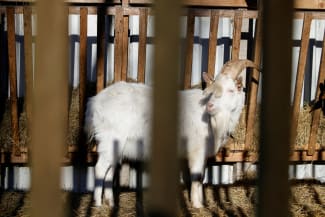Preventable infectious diseases are climbing worldwide amid stalled progress with global immunization campaigns, shifts in vaccine acceptance, and reductions in public health funding.
In the United States, even before Health and Human Services (HHS) Secretary Robert F. Kennedy Jr. assumed office, vaccine-preventable diseases had shown signs of a resurgence. This pattern came to head in Texas, as this year the state sparked the largest bout of measles in the United States in three decades. The disease spilled across borders, fueling a deadly outbreak in northern Mexico.
The outbreak hit as Kennedy and HHS agencies—such as the U.S. Centers for Disease Control and Prevention (CDC)—tinker with the pediatric vaccine schedule. In September, a CDC advisory panel—appointed by Kennedy—recommended to restrict access to the MMRV vaccine, a combination shot designed to protect children against measles, mumps, rubella, and varicella (chickenpox).
Think Global Health's disease tracker allows people from all regions to follow how these outbreaks develop, as vaccine access shifts worldwide.
Disease Trends to Watch
Infectious diseases were once a leading cause of death in the United States and globally before widespread access to vaccines became available. Since 1980, cases and deaths have significantly declined.
Following changes in vaccine policy and growing hesitancy, measles and pertussis (whooping cough) are two diseases making a comeback globally.
Measles
Last year, the CDC reported the number of countries experiencing large or disruptive outbreaks of measles nearly doubled—from 36 in 2022 to 57 in 2023.
Starting in January 2025, measles rebounded in North America, largely fueled by outbreaks in Texas; Alberta, Canada; and Chihuahua, Mexico.
This year, all three countries have reported their largest measles outbreaks since the early 1990s.
On November 10, 2025, Canada announced it had lost its measles-free status after three decades of elimination. After the country's outbreak surged in October 2024, low vaccination rates—particularly in conservative Mennonite communities—drove continuous transmission for more than 12 months, passing the World Health Organization's benchmark for a country to lose its measles-elimination designation. As of early November, Canada has recorded approximately 5,100 cases since the outbreak began.
Now that Canada is no longer considered measles-free, the Americas region as a whole has lost this rank for the third time in seven years. The Pan American Health Organization (PAHO) removed measles-elimination status from Venezuela and Brazil in 2018 and 2019, respectively, though those countries regained their standing by 2024. The U.S. outbreak could pass the 12-month limit for elimination in January 2026, and Mexico could follow suit the following month.
Whooping Cough
After decades of slow growth, whooping cough cases exploded from 2023 to 2024, driven by large outbreaks in Europe and Asia after a drop in vaccine coverage for children during the COVID-19 pandemic.
In 2025, large outbreaks in Japan and Australia have kept case counts high. Like that of other vaccine-preventable diseases, whooping cough's resurgence has been fueled by lower vaccination rates as well as waning immunity from pertussis vaccines.
How This Tracker Was Made
Motivated by this global flux, Think Global Health has partnered with International Society for Infectious Diseases (ISID) to launch a dashboard for how global reductions in vaccination coverage are contributing to outbreaks of vaccine-preventable diseases such as measles around the world.
Updating weekly, the map will trace outbreaks of nine diseases featured in the CDC's routine immunization schedule: hepatitis A, hepatitis B, diphtheria, measles, mumps, pertussis (whooping cough), polio, respiratory syncytial virus, and varicella (chickenpox). The Think Global Health team has selected these diseases for their severity, transmissibility, and overall ability to harm the health of people and communities.
The map's real-time data is provided by ISID's Program for Monitoring Emerging Diseases (ProMED), a long-standing program conducting global reporting of infectious disease outbreaks using global experts to review and filter reputable news and official sources. Yearly historical data from 2000 to 2024 comes from the World Health Organization's Joint Reporting Form on immunization.
Why It Matters
According to the Institute for Health Metrics and Evaluation (IHME), declines in vaccination coverage are driven by a complex set of factors that vary by country, including conflict, vaccine hesitancy, and economic uncertainty. The IHME reported in July 2025 that many countries' vaccination levels have not recovered from disruptions caused by the COVID-19 pandemic.
Most recently, major shifts in the global immunization funding landscape have led vaccination programs into an uncertain future. Citing concerns around vaccine safety, HHS Secretary Kennedy vowed to withhold the United States' $1.2 billion pledge to Gavi, a global partnership between multilateral organizations, governments, and vaccine manufacturers responsible for vaccinating half the world's children. The June 2025 announcement followed the dismantling of USAID (U.S. Agency for International Development), once a major supporter of Gavi, as well as other aid cuts from donor countries.
This tracker will serve as an ongoing resource for policymakers and the public interested in tracking the impact of these changes on disease outbreaks globally.
